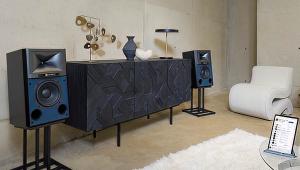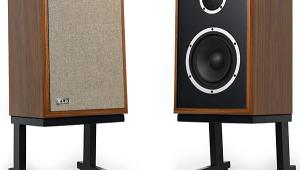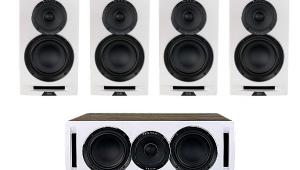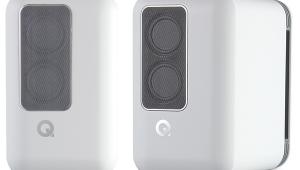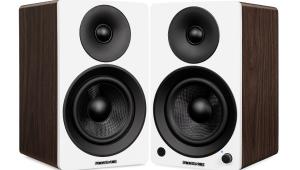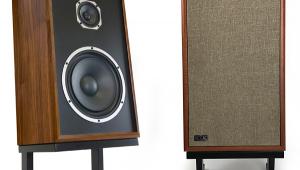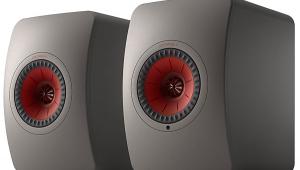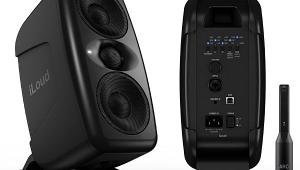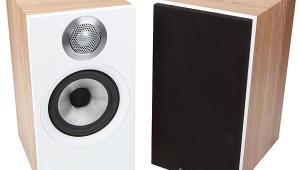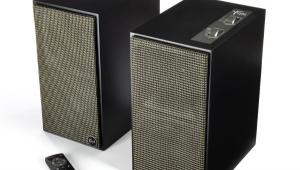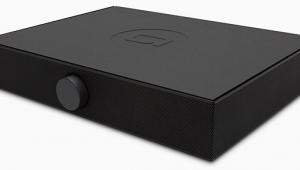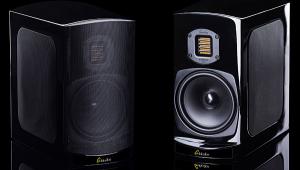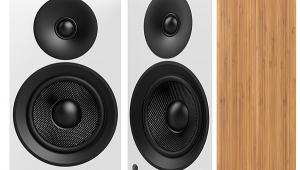Pioneer SP-BS41-LR Speaker System

Andrew Jones for All
Isn’t it preposterous for the Pioneer Corporation to assert itself as a loudspeaker manufacturer? After all, the company is best known in the home theater sphere as a maker of audio/video receivers. Those with just slightly longer memories recall Pioneer’s world-class KURO plasmas as some of the best HDTVs ever made. There was a time when the Laserdisc format, which Pioneer championed, was the signal source of choice among videophiles. Pioneer was also one of the Japanese audio brands that established the stereo receiver as a staple of dorm rooms (including mine) during the 1970s. But who thinks of Pioneer in connection with speakers?
For starters, Pioneer does. The company’s first product back in 1937 was a loudspeaker. The following year, company founder Nozomu Matsumoto opened the Fukuin Shokai Denki Seisakusho radio and speaker repair shop in Tokyo, which eventually became the Pioneer we know today. Bullet points on the Pioneer and Wiki sites mention further speaker introductions in 1953 and 1976, including a model created by an ex-JBL engineering team. So it’s no surprise that Pioneer got acquainted with another Western speaker designer in 1997: Englishman Andrew Jones, formerly chief engineer for KEF and Infinity.
Under the aegis of TAD (Technical Audio Devices), Jones has designed studio-quality speakers that have turned heads in consumer hi-fi circles. Under the Pioneer Elite brand, he has followed up with the acclaimed EX Series, a high-end consumer line. I reviewed the S-2EX threeway monitor [Home Theater, February 2007] and still remember its enormous, golden, feelgood midrange and authoritatively solid bass. Now the Pioneer/Jones relationship has produced a new speaker line designed for those of us on a budget. Whereas the S-2EX currently commands $7,000 per pair, the SP-BS41-LR sells for a mere $149 per pair.
Is Andrew Jones willing to put his reputation on the line for a line of speakers that’s clearly meant to complement Pioneer’s lower-priced AVRs? Apparently so. The back plates literally bear his signature, A. Jones.
Zapped, Pressed, Curved
While I don’t turn up my nose at compact satellite speakers, the SP-BS41-LR is something else entirely. It’s nearly 14 inches tall, earning our monitor designation. According to the manual, it will sound best mounted on a stand 2 feet from the wall. The enclosures curve inward toward the back, eliminating parallel flat side surfaces. In turn, that reduces sound-muddying standing waves inside the speaker.

The curves come from a bonding process which my company contact was kind enough to describe: “A 12mm sheet of medium-density fiberboard is inserted between curved aluminum plates, one convex, one concave, with each plate connected to a high-power RF energy source. The RF field that is created between the aluminum plates heats the resin within the MDF and softens it. The plates are then pressed together to force the MDF to take on the curvature of the plates. The field is removed, the resin recures, and the MDF takes on a permanent curvature.” This is not how you build a cheap speaker. This is how you build a speaker with—dare I say it?—high-end aspirations.
The speaker has an unusual appearance. The front is innocent of screws and matches the black vinyl wood-patterned wrap of the sides and back. In lieu of a fabric grille covering the entire baffle, nondetachable metal grilles mask each driver, making these speakers as toddler-proof as a standmount speaker can be (although they still might get knocked off their stands). The Pioneer logo is located between the drivers, flush left, nonconformist-style.
The two-way design features a 1-inch silk-dome tweeter and a 5.25-inch plastic-cone woofer with oversized magnets (90mm in diameter by 15mm thick), and a sophisticated multi-component crossover. The baskets are made of pressed metal. This isn’t as good as the die-cast metal that more expensive speakers use, but in many ways, it’s better than the commodity-grade plastic used in the cheapest ones. Round metal-nut gold-plated binding posts grace the back, along with a port. The use of real binding posts is always a good sign. A speaker designer who uses signal-strangling wire clips on a speaker this size is one who has simply stopped trying.


